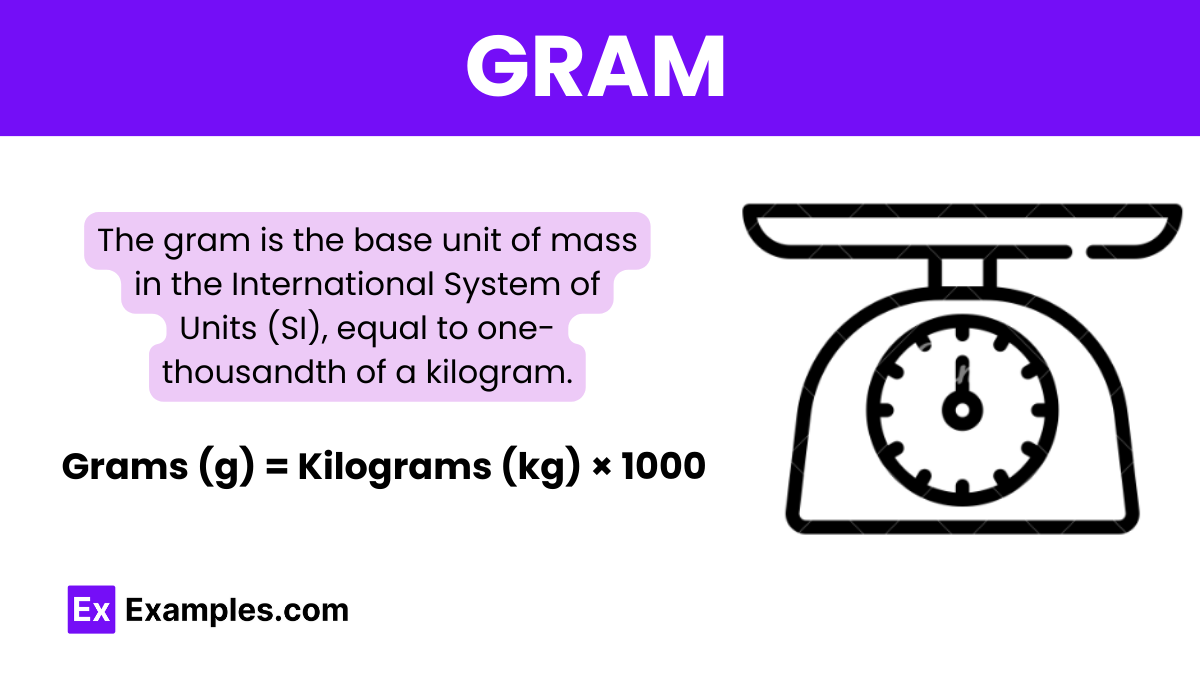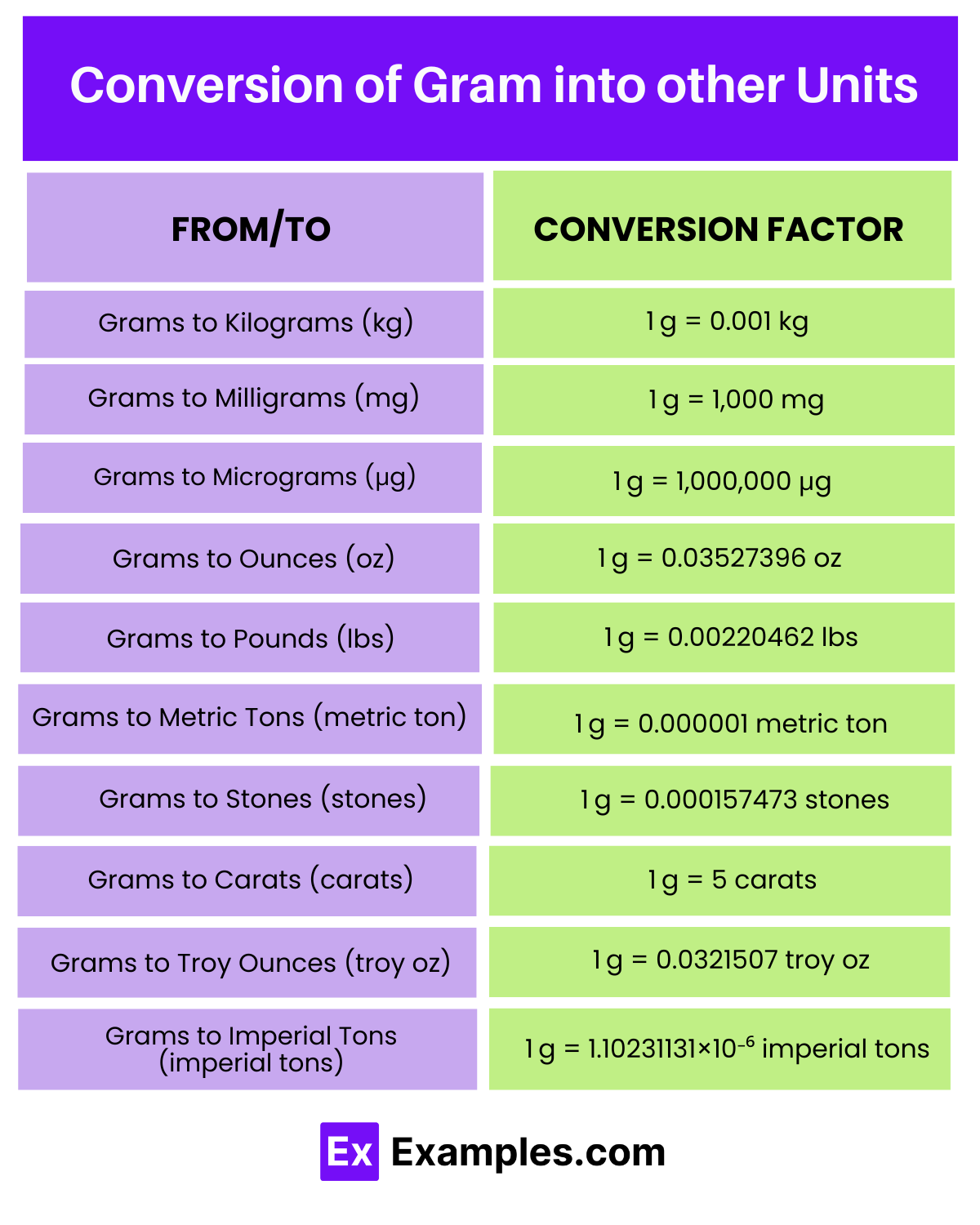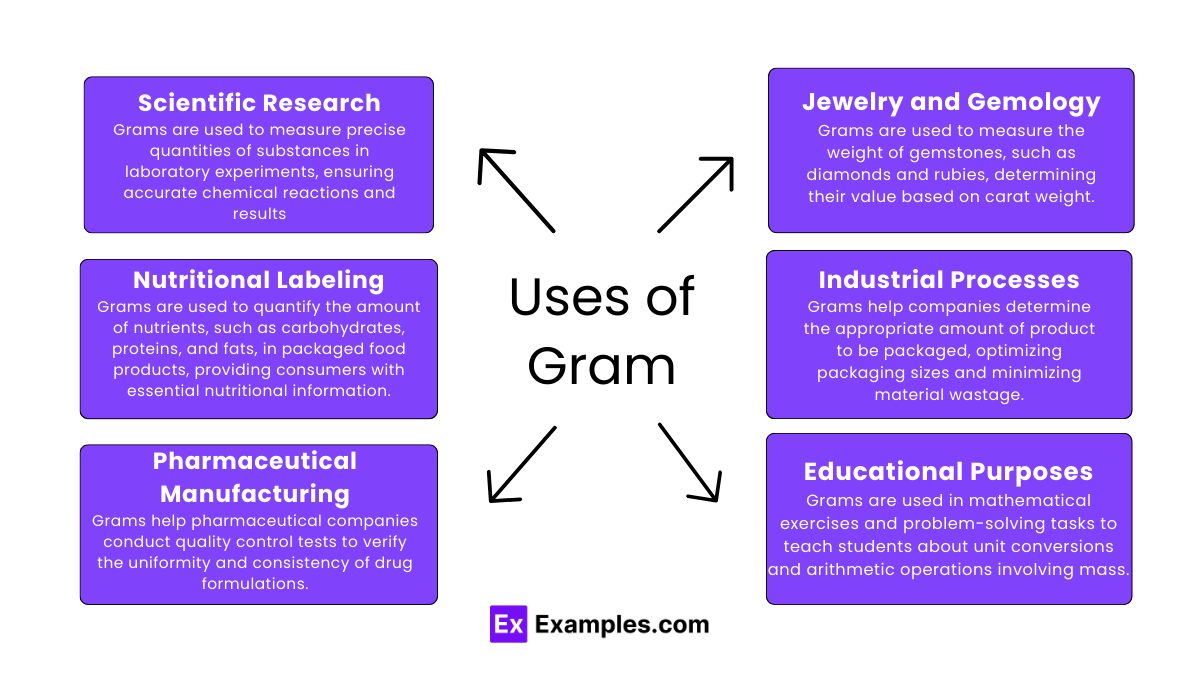How many milligrams are in a gram?
10
100
1000
10000


Grams (g) = Kilograms (kg) × 1000
| Unit | Symbol | Prefix | Value |
|---|---|---|---|
| Milligram | mg | milli- | 1mg = 10⁻³g |
| Microgram | µg | micro- | 1μg = 10⁻⁶g |
| Nanogram | ng | nano- | 1ng = 10⁻⁹g |
| Picogram | pg | pico- | 1pg = 10⁻¹²g |

| From/To | Conversion Factor | Example |
|---|---|---|
| Grams to Kilograms (kg) | 1 g = 0.001 kg | 10 g = 0.01 kg |
| Grams to Milligrams (mg) | 1 g = 1,000 mg | 10 g = 10,000 mg |
| Grams to Micrograms (μg) | 1 g = 1,000,000 μg | 10g = 10,000,000 μg |
| Grams to Ounces (oz) | 1 g = 0.03527396 oz | 10 g = 0.3527396 oz |
| Grams to Pounds (lbs) | 1 g = 0.00220462 lbs | 10 g = 0.0220462 lbs |
| Grams to Metric Tons (metric ton) | 1 g = 0.000001 metric ton | 10 g = 0.00001 metric ton |
| Grams to Stones (stones) | 1 g = 0.000157473 stones | 10 g = 0.00157473 stones |
| Grams to Carats (carats) | 1 g = 5 carats | 10 g = 50 carats |
| Grams to Troy Ounces (troy oz) | 1 g = 0.0321507 troy oz | 10 g = 0.321507 troy oz |
| Grams to Imperial Tons (imperial tons) | 1 g = 1.10231131×10⁻⁶ imperial tons | 10 g = 1.10231131×10⁻⁵ imperial tons |
| Gram (g) | Kilogram (kg) |
|---|---|
| A metric unit of mass equal to 1/1000 of a kilogram. | A metric unit of mass equal to 1,0001,000 grams or approximately 2.20462 pounds. |
| Smaller unit of mass. | Larger unit of mass. |
| Commonly used for small items or precise measurements. | Commonly used for larger quantities or weights. |
| 1 kilogram = 1,000 grams | 1 gram = 0.001 kilograms |

The gram is preferred for measuring small masses due to its convenient size and ease of use, making it suitable for precise measurements in laboratories, kitchens, and pharmacies.
Examples of objects with a mass close to one gram include a small paperclip, a single raisin, or a U.S. dollar bill.
Everyday items often measured in grams include food ingredients (e.g., flour, sugar), medications, jewelry, and small electronic components.
Text prompt
Add Tone
10 Examples of Public speaking
20 Examples of Gas lighting
How many milligrams are in a gram?
10
100
1000
10000
What is the mass of 5 grams in milligrams?
50 mg
500 mg
5000 mg
50000 mg
A package weighs 250 grams. How many kilograms does it weigh?
0.25 kg
2.5 kg
25 kg
250 kg
What is the mass of 0.75 kilograms in grams?
75 g
750 g
7500 g
75000 g
What is the mass of a 1500 milligram object in grams?
1.5 g
15 g
150 g
1500 g
A 2-kilogram bag of rice is equivalent to how many grams?
200 g
2000 g
20000 g
2 g
Which of the following items is most likely to have a mass measured in grams?
A car
A pencil
A building
A swimming pool
How many grams are there in 0.05 kilograms?
5 g
50 g
500 g
5000 g
If an apple weighs 150 grams, how many milligrams does it weigh?
1500 mg
15000 mg
150000 mg
1500000 mg
What is the mass in grams of 3 kilograms of flour?
300 g
3000 g
30000 g
3 g
Before you leave, take our quick quiz to enhance your learning!

